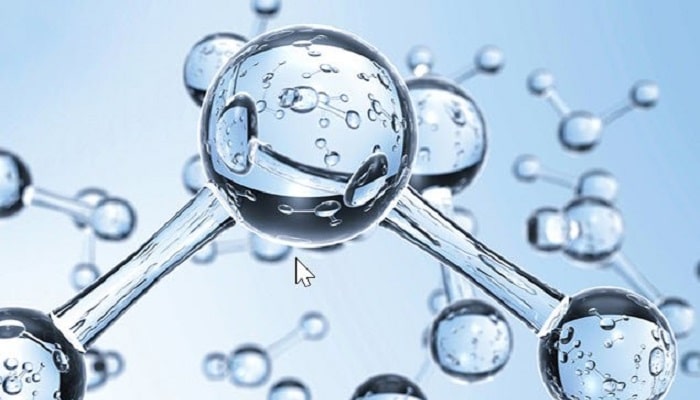Hydrogen is the most abundant element in the universe and also what makes up the core of the sun. It is converted into helium during nuclear fusion, which is the process by which the energy that keeps the sun running is produced.
Introduction
Hydrogen is the most abundant element in the universe and accounts for about 75% of the total mass of the cosmos. Hydrogen is also the element that makes up the sun and other stars. In fact, 9 out of 10 atoms in the universe are hydrogen!
The main form of hydrogen found in the universe is molecular gas H2, which is a colorless, odorless gas. Here on Earth, most hydrogen is found in the form of water (H2O).
The sun's core is a gigantic ball of glowing gas where atomic hydrogen nuclei fuse to form atomic helium nuclei. This reaction releases large amounts of energy that keep the sun “on”.
Unlike the sun, most stars are dim and cold. They glow because they have a very hot core where hydrogen atoms fuse to form helium atoms. The released energy keeps this core warm and makes the star shine.
What is helium?
Helium is a colorless, odorless, tasteless and highly flammable gas. It is the second most abundant element in the universe and the first element to be formed during primordial nucleosynthesis. In its natural state, helium is a monatomic gas that is in thermodynamic equilibrium with the isotopes of hydrogen.
Helium is highly compatible with many materials and can be used to pressurize combustion chambers, serve as a coolant gas in nuclear reactors, and act as a support gas in welding processes. Furthermore, helium is an inert noble gas that does not chemically react with most other elements.
What is hydrogen?
Hydrogen is the lightest and most abundant chemical element in the universe. It is the main component of hydrogen atoms, which are most of the matter in the universe. Hydrogen is also an important fuel for rockets and other spacecraft.
Hydrogen is a colorless, odorless gas that combines easily with other elements. It is very light and floats on water. Hydrogen is highly flammable and can explode if accidentally exposed to a flame or spark.
Learn more about the sun
The sun is a very special star. It is the largest object in the solar system and is also the center of the solar system. Everything revolves around him. The sun is a hot, glowing ball of gas that has a diameter of approximately 1.4 million km. The temperature on the surface of the sun is approximately 6000 degrees Celsius. This means that it glows with a very strong and warm light.
The sun is composed mainly of hydrogen and helium. Hydrogen converts to helium in the sun's core through nuclear fusion. This reaction releases large amounts of energy that keep the sun warm and bright.
The energy released by the sun is called sunlight. Sunlight is a mixture of visible, ultraviolet and infrared light. It warms us and brightens the day. Sunlight also sustains life on Earth. Plants use sunlight to make their food through photosynthesis.
Most of the sun's energy is emitted as visible light. This visible light forms a rainbow when it hits water droplets in the air. The color you see in a rainbow depends on how many water droplets are in the air and how much sunlight hits those droplets.
The colors of the rainbow are: red, yellow, orange, green, blue, indigo and violet.
How does hydrogen convert to helium?
Hydrogen is the most abundant element in the universe and also the simplest. It consists of a single proton, which is positively charged, and a single electron, which is negatively charged. When two hydrogen atoms approach each other, their electrons interact with the protons in the nuclei to create a chemical bond.
Hydrogen can combine with other elements to form compounds, but it can also exist alone as a gas. In nature, hydrogen is found in most organic and inorganic molecules. Most of the hydrogen present in the human body is in body fluids such as blood and saliva. It is also present in body cells and connective tissues.
Hydrogen is also an important component of stars, including the Sun. Stars shine because of the nuclear reaction taking place in their cores, which combines hydrogen atoms to form helium atoms. This reaction releases large amounts of energy, which is emitted in the form of light and heat.
Why is this reaction important?
The hydrogen to helium conversion reaction is important because it is the main source of energy the sun uses to emit light and heat. This reaction takes place in the sun's core, where conditions are extremely hot and dense. The pressure at this location is so intense that hydrogen atoms fuse together, forming helium atoms. The process releases enormous amounts of energy that are emitted in the form of light and heat.
The hydrogen to helium conversion reaction is also important because it keeps the sun “bouncing”. Most of the energy emitted by the sun comes from ultraviolet light, which has a very short wavelength. When this light hits the Earth's surface, it turns into heat, which causes the Earth to warm up. However, ultraviolet light also has the ability to ionize atoms, that is, strip electrons from them.
Conclusion
When hydrogen converts to helium in the sun's core, the core's energy levels increase. This makes the sun shine brighter and emit more heat. It turns out that hydrogen is a very important element for life on Earth. Without it, there would be no fresh water or green plants.
After all, did you like to know more about? Tell us here in the comments and
don't forget to share with your friends and family.
Want to know more about it? Enter our blog and find more
information!


